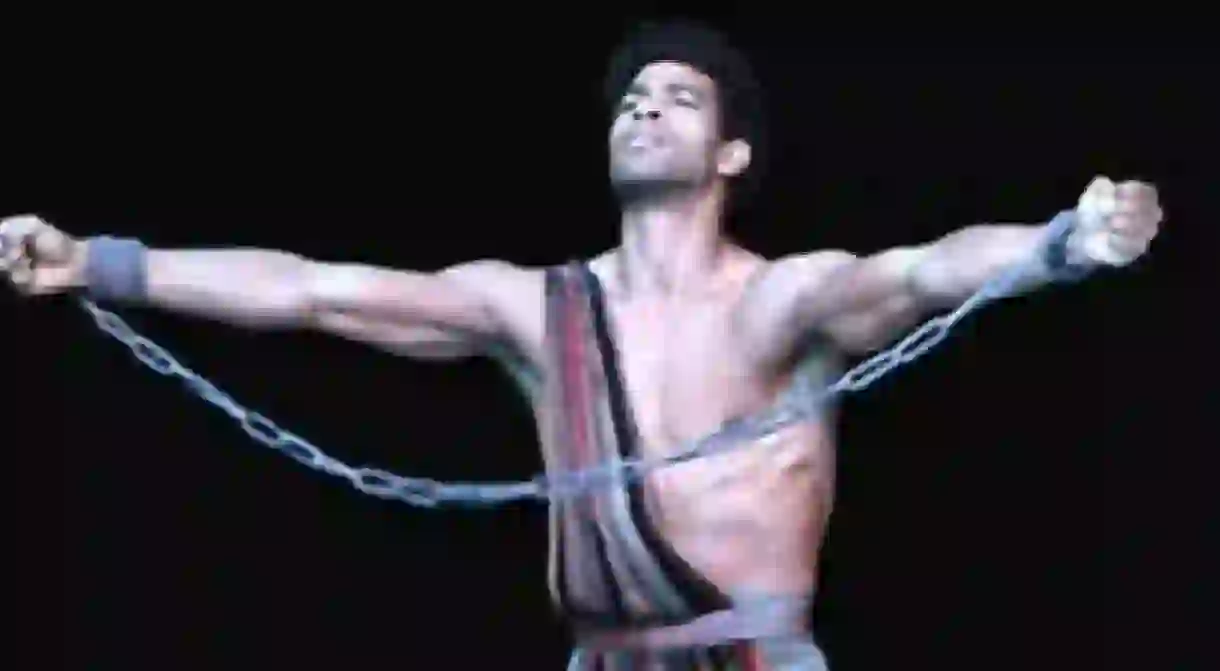Carlos Acosta: Cuba Through The Eyes Of Dance Royalty

Starting ballet classes as a child looking to get out of trouble, Cuba’s brightest male dance star has wooed audiences across the globe with classical roles that have earned him comparisons with legends such as Rudolf Nureyev.
Carlos Acosta left his home in Havana over two decades ago to dance across the world’s most prestigious stages, but there’s an unbeatable feeling about Cuba — the street musicians, the women with colourful headbands, the cigars and the boisterous groups of baseball fanatics that, every time he goes back, makes him think not a day has gone by. The famous dancer professed as much a few years ago, in the CNN documentary My City/My Life, which took him and his countless fans back to his home.
At the age of nine Acosta reportedly excelled as a mango thief, and he was so energetic as a child that it was almost impossible to keep him out of trouble. Until, one day, a silent ballet movie inspired his father, a truck driver, to think dance classes were the answer — and he has never looked back. The young artist soon realised that, if he put his mind to it, he could be the best at his new profession, his family and his vibrant life in the Caribbean continuously injecting him with vital shots of passion and inspiration.
As a teenager, he started touring the world as a guest artist, starring alongside world-famous prima ballerinas, such as Italy’s Luciana Savignano. It wasn’t long before he begun more permanent collaborations with prestigious companies, like the English National Ballet, the National Ballet of Cuba and the Houston Ballet, as well as guesting with the likes of the American Ballet Theatre during its Metropolitan Opera House season in New York. From North America to Europe and Australia, audiences flooded to see Acosta perform in Don Quixote, The Corsaire, Giselle and The Nutcracker. The smallest out of 11 siblings of a struggling Havana family had now turned into Prince Siegfried in Swan Lake.
Havana, with its endearing chaos and romantic shabbiness is, according to Acosta, a city that ‘inspires him to dance’. It’s where one of the biggest and busiest dancers of our time sits to relax — and smoke a cigar. His homeland also became the backdrop of the artist’s own ballet Tocororo – A Cuban Tale, about a young boy who has to leave his home in the countryside to start in the city afresh — a story not far from his own. The music, a medley of both symphonic and pop Cuban music, was written by Miguel Nuñez and it comes alive on stage by a group of local musicians. Bringing the story even closer to real life, Acosta’s young self is incarnated by his nephew Yonah Acosta, while the company of performers consists of selected Cuban dancers.
In summer 2013, Acosta held a limited number of performances at London’s English National Opera, where he presented, along with dance partners from the Royal Ballet, extracts from Kenneth MacMillan’s neoclassical Mayerling and Requiem, next to George Balanchine’s Apollo, among others. In October 2013, he presents his first work for The Royal Ballet – a dance adaptation of Don Quixote, the classic novel by Miguel de Cervantes. Released in the same month is also the artist’s first book of fiction, Pig’s Foot (Bloomsbury), a tale of ‘revolution, family secrets, love and identity across three generations’. Once again, Cuban history unravels through the eyes of the protagonist Oscar Kortico — and, like the dancer himself through his art, what this hero utterly aspires to, in the end, is freedom.
Watch here the trailer for Carlos Acosta’s production of Don Quixote:













